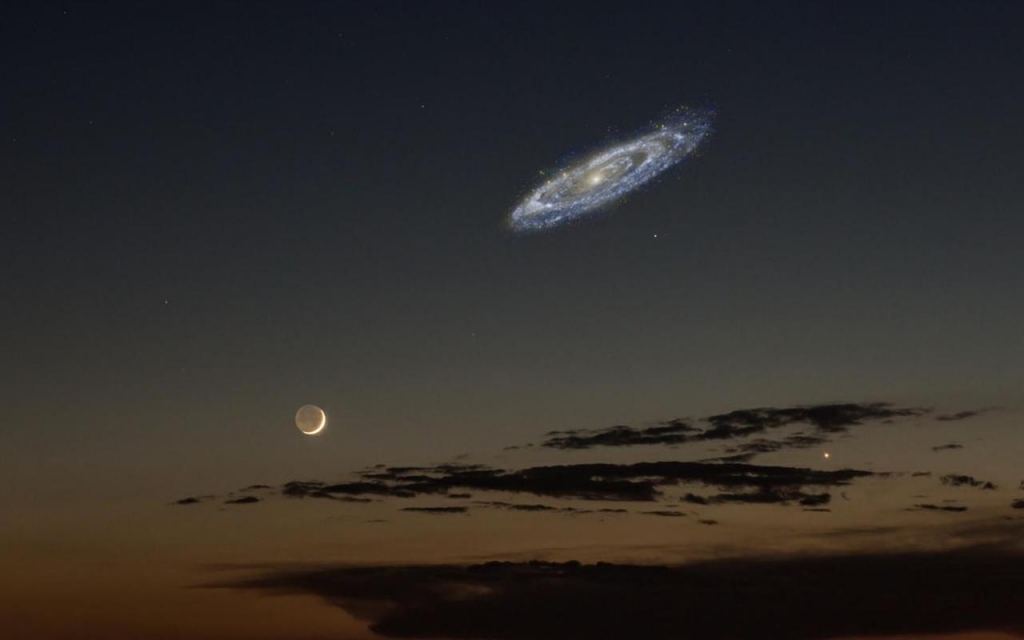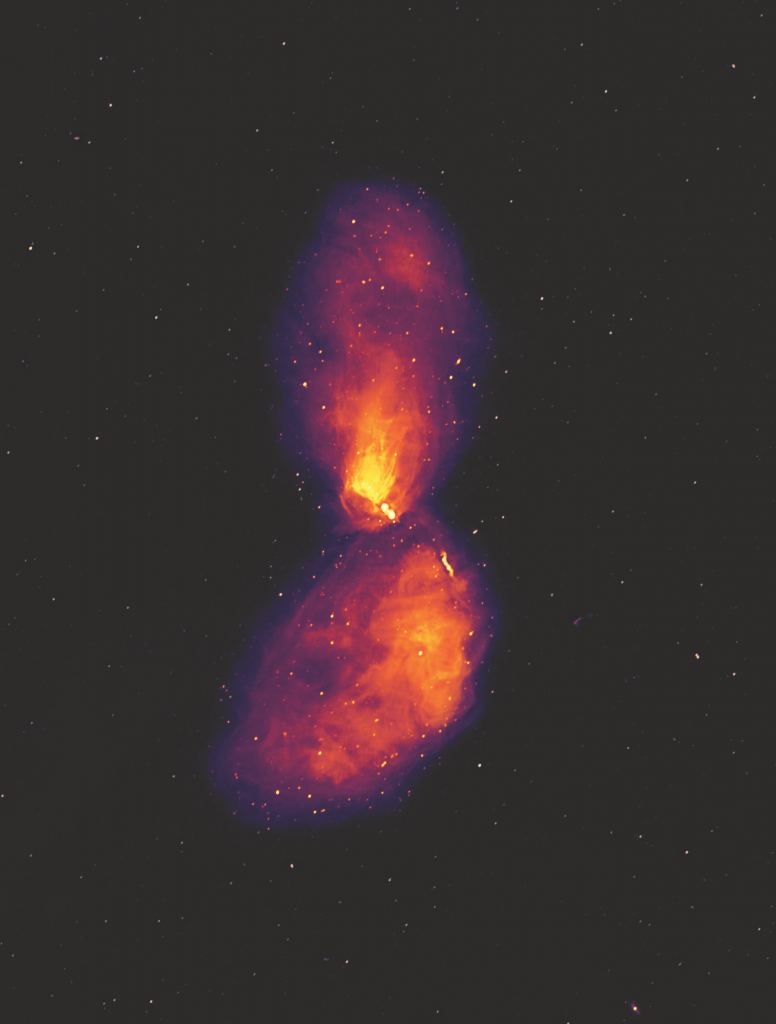One concept that’s difficult to visualize is the apparent size of objects in the sky. No the actual size of an object, but rather the amount of area an object covers in the sky. Apparent size depends on an object’s actual size and its distance from us. For example, the Sun is about 400 times wider than the Moon, but also about 400 times more distant, so the Sun and Moon have roughly the same apparent size.

Most of the astronomical images we see are of single objects. So when we see a picture of a galaxy, we might think it must be really tiny, and the telescope just made it appear large. But that isn’t always the case. Take, for example, the Andromeda galaxy. With the naked eye, we can only see it as a small faint smudge in the constellation Andromeda. Even then we can only see it under extremely dark conditions. But if it were much brighter (or our eyes much more light-sensitive) we would see a sprawling galaxy roughly five times wider than the Moon. It would be a tremendous sight. The same is true of many nebulae. The Orion nebula appears larger than the Moon, and some fainter nebulae are even larger.
Of course, these comparisons only consider appearances in visible light. If you include other wavelengths such as radio, the sky would appear very different. Astronomical radio light is produced in several ways, but one of the most common sources are the jets powered by galactic black holes. Ionized plasma is spewed away from the galactic core, creating huge lobes that emit radio light. By studying these radio lobes, astronomers can better understand supermassive black holes.

One of the closest and most powerful active galaxies is Centaurus A. It’s about 12 million light-years from Earth. But its jets are so large that they span more than 16 Moon-widths in the sky. Hold your hand at arm’s length, splay your fingers, and that’s how large Centaurus A would appear if you could see in radio
It’s difficult to make high-resolution images of such a large object in the sky, which is why a recent study of Centaurus A is so impressive. Using the Murchison Widefield Array (MWA) in Western Australia, the team mapped the radio lobes in detail. They then combined it with optical and x-ray data. But the team did more than create an amazing image. From their data, they found evidence to support an idea known as chaotic cold accretion. Basically, that cold gas within the galactic halo can fall to the black hole, which in turn powers the creation of large jets. This could help explain why some galaxies such as Centaurus A have tremendously active black holes.
It all goes to show what astronomers can learn when they take a wider view.
Reference: McKinley, B., et al. “Multi-scale feedback and feeding in the closest radio galaxy Centaurus A.” Nature Astronomy (2021): 1-12.

